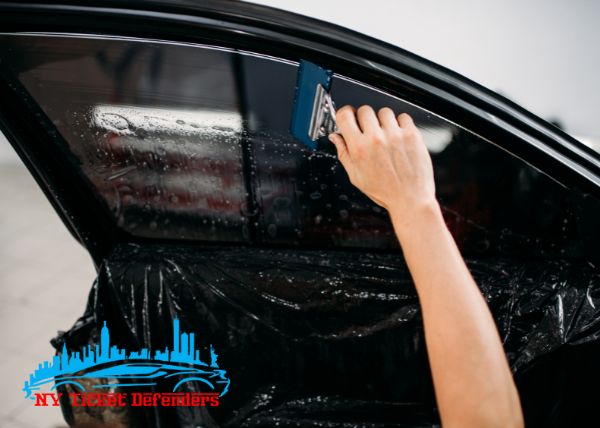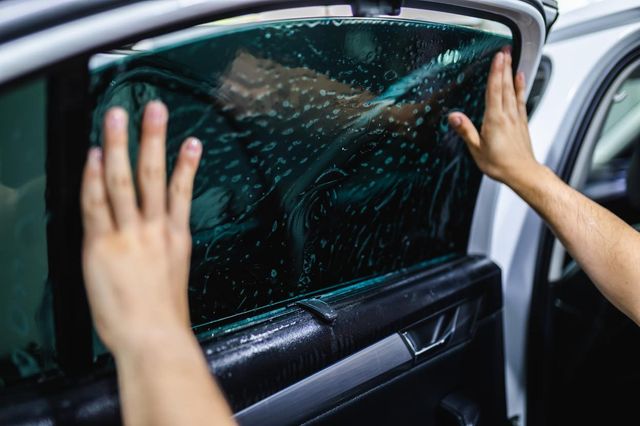Automobile Window Tinting for Warmth Decrease and Power Efficiency
Automobile Window Tinting for Warmth Decrease and Power Efficiency
Blog Article
Window Tinting Rules and Standards: What You Required to Know Before Tinting Your Cars And Truck
Before proceeding with home window tinting for your vehicle, it is necessary to familiarize yourself with the diverse regulations and standards that govern this practice throughout different states. These regulations determine the permitted degrees of color darkness, frequently gauged by noticeable light transmission (VLT) percents, and consist of particular stipulations for front windscreens targeted at making sure road safety and security. Furthermore, specific jurisdictions may supply medical exceptions for individuals with certifying problems. Understanding these intricacies can save you from possible lawful ramifications, however what are the specific rules in your state?
Summary of Window Tinting Regulations
Home window tinting legislations are often based on variation throughout different jurisdictions, reflecting local policies and safety and security factors to consider. These laws determine the permissible levels of tint darkness and reflectiveness on vehicle home windows, guaranteeing that vehicle drivers preserve appropriate exposure while additionally safeguarding against harmful UV rays and warm.
The majority of guidelines classify home window tinting based on the Visible Light Transmission (VLT) percent, which shows the amount of light that can travel through the window. Typically, reduced VLT portions signify darker colors. Legislations commonly separate in between the front, side, and back home windows, with more stringent constraints related to the front windscreen to enhance safety for both the motorist and various other road customers.
Conformity with window tinting guidelines is important, as infractions can result in fines, compulsory elimination of the color, and potential boosts in insurance coverage costs. It is necessary for lorry proprietors to familiarize themselves with regional regulations prior to proceeding with home window tinting setups.
State-by-State Tint Rules
Understanding the particular window tinting policies in each state is crucial for vehicle owners seeking to abide by the legislation. Each state in the U.S. has developed its own collection of regulations controling home window tinting, which can vary substantially. These regulations commonly dictate the allowed levels of color darkness, the kinds of home windows that can be tinted, and any kind of clinical exemptions that might apply.
For example, states like The golden state have rigorous constraints on tint darkness for front windows, while others, such as New Mexico, may allow darker tints. Furthermore, specific states mandate specific presence percentages for various home windows, including the windshield, front side windows, and rear home windows. It is critical for automobile proprietors to acquaint themselves with their state's laws to stay clear of possible fines or charges.
Moreover, some states may require an accreditation sticker to be positioned on colored home windows, indicating conformity with state legislations. Failing to stick to these policies not only risks legal repercussions however can also influence safety and visibility while driving. Consequently, automobile proprietors must conduct complete research study or get in touch with local authorities to make sure full understanding and conformity with state-by-state color guidelines.
Allowed Color Degrees and Types
Lots of automobile proprietors might be amazed to discover that enabled color degrees and kinds differ commonly across different states. Each state has actually established its own policies regarding the permitted darkness and reflectivity of home window tint, commonly determined by Visible Light Transmission (VLT) percents. VLT refers to the quantity of light that can pass with the tinted home windows; hence, a lower percentage indicates a darker tint.

Furthermore, the sorts of tint materials enabled can differ, with some states restricting mirror-like or metallic coatings. It is essential for automobile proprietors to familiarize themselves with their state's certain regulations to ensure compliance. Non-compliance can cause penalties, required removal of the tint, or various other legal consequences, making it important to comprehend these guidelines prior to waging setup.
Medical Exceptions for Tinting
While not all states supply allowances for clinical exceptions concerning window tinting, those that do identify the requirement for certain individuals to enhance presence and comfort as a result of medical problems. Numerous medical problems, such as lupus, skin cancer, and particular eye conditions, can render individuals specifically sensitive to sunshine. Subsequently, these people may call for darker tints to safeguard themselves from harmful UV rays and glare.

It is important to keep in mind that despite having a medical exception, there may still be restrictions on the degree of color enabled. Conformity with state legislations ensures that people are both protected and within lawful limitations. Those thinking about clinical exemptions should contact their local Division of Motor Autos or equal authority to understand the needs and procedures essential to make an application for an exception effectively.
Fines for Non-Compliance
Failing to abide by home window tinting laws can lead to substantial charges, which vary by state. Police are equipped to release citations for vehicles that do not stick to the defined tinting laws. These charges commonly consist of penalties, which can vary from small quantities to a number of hundred bucks, depending on the seriousness of the infraction and the state in inquiry.
In some jurisdictions, repeated offenses might lead to escalating penalties or extra penalties, such as compulsory court appearances. Additionally, non-compliance may demand the elimination of illegal tinting, commonly at the proprietor's expenditure. In severe instances, habitual culprits may deal with suspension of their automobile enrollment until compliance is accomplished.
In addition, insurance coverage ramifications might develop from obtaining multiple citations for home window color violations. Insurance providers may see such offenses as a sign of riskier actions, potentially causing enhanced costs or trouble in protection.
To prevent these charges, it is learn this here now essential for car proprietors to acquaint themselves with their local home window tinting laws and ensure that their lorry complies (Window Tinting). This positive method not just stays clear of lawful ramifications but likewise advertises roadway security
Verdict

Many guidelines identify window tinting based on the Visible Light Transmission (VLT) portion, which shows the amount of light that can pass via the home window. Conformity with home window tinting guidelines is critical, as violations can result in fines, obligatory removal of the tint, and possible increases in insurance coverage premiums.Understanding the certain window tinting laws in each state is important for automobile proprietors looking for to conform with the legislation. These laws typically dictate the allowable degrees of tint darkness, the kinds of home windows that can be tinted, and any clinical exemptions that might apply.
For instance, states like California have stringent constraints on tint darkness for front windows, while others, such find this as New Mexico, might allow darker tints.
Report this page